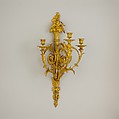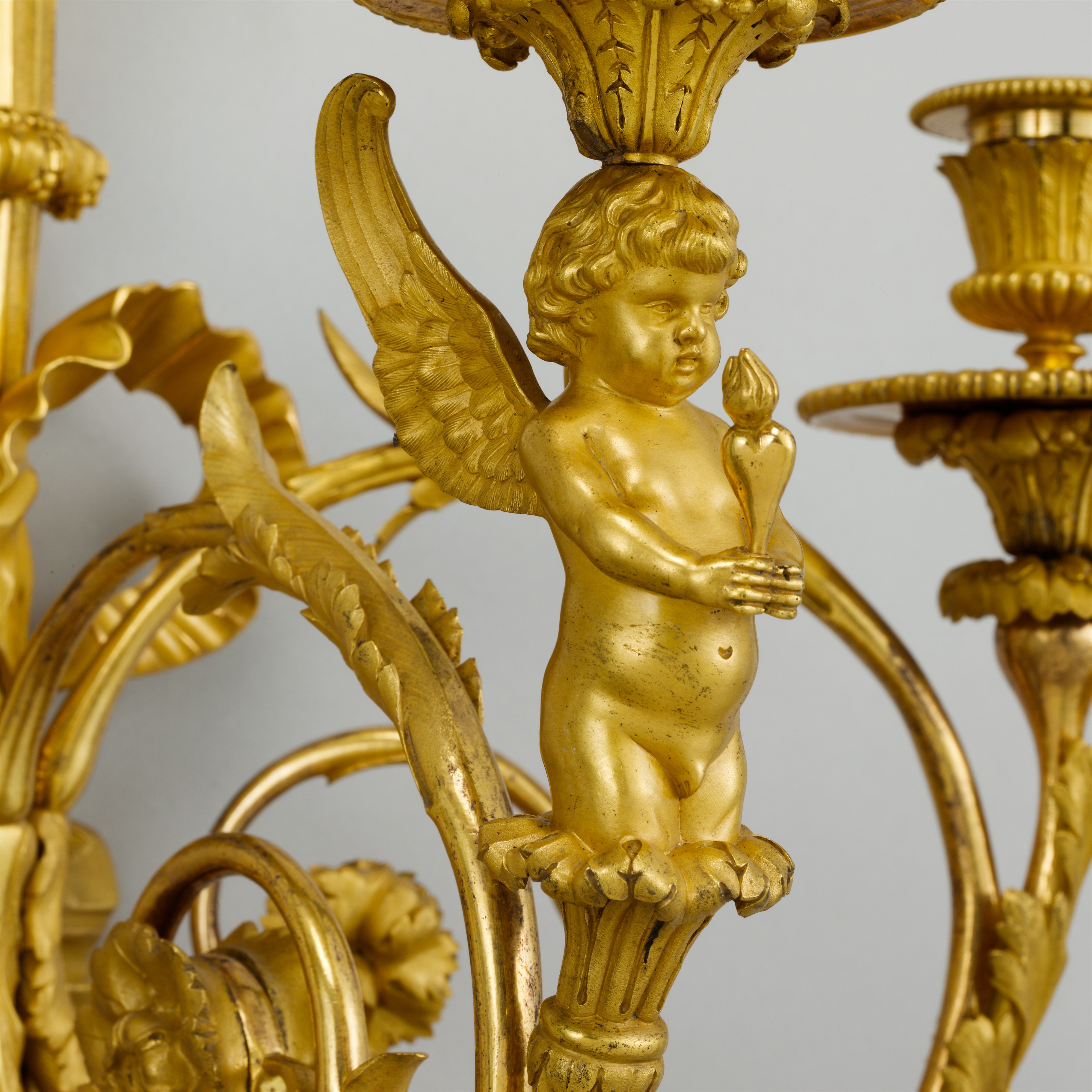Three-light wall brackets (set of four)
After a model by F. L. Feuchère père French
These four gilt-bronze wall lights are decorated with allegories of love. The stem is fluted in the form of a torch flaring at the top and surmounted by a group of clouds on which two kissing doves and a laurel spray are poised. From the stem emerge two arabesque-shaped branches, linked by a ribbon knot and ornamented with grape bunches and acanthus leaves. In the center, a third arm, higher than the two others, terminates in a small naked cupid holding a flaming heart.
The original model of these so-called « lovebirds » wall lights, was made in 1787 by the bronzier Pierre-François Feuchère for the bedchamber of Marc-Antoine Thierry de Ville d'Avray, Intendant Général du Garde-Meuble. The workshop of Pierre-François Feuchère, who worked with his son Lucien-François, was one of the most important for the production of luxurious gilt bronze at the end of the eighteenth century. Because of its success, the Feuchères produced different variants of this wall light. One year later, two pairs were made for Marie-Antoinette’s cabinet de toilette at the Château de Saint-Cloud (now in the collection of the Musée du Louvre, Paris) and two others for the private Cabinet of the King at Saint-Cloud (now in the Elysée Palace) where the doves were replaced by a bouquet of fruits and flowers.
Emblematic of the neoclassical style, these wall lights have been repeated many times during the late eighteenth century and nineteenth century, making a precise dating of the MMA models very difficult.
Due to rights restrictions, this image cannot be enlarged, viewed at full screen, or downloaded.
This artwork is meant to be viewed from right to left. Scroll left to view more.





